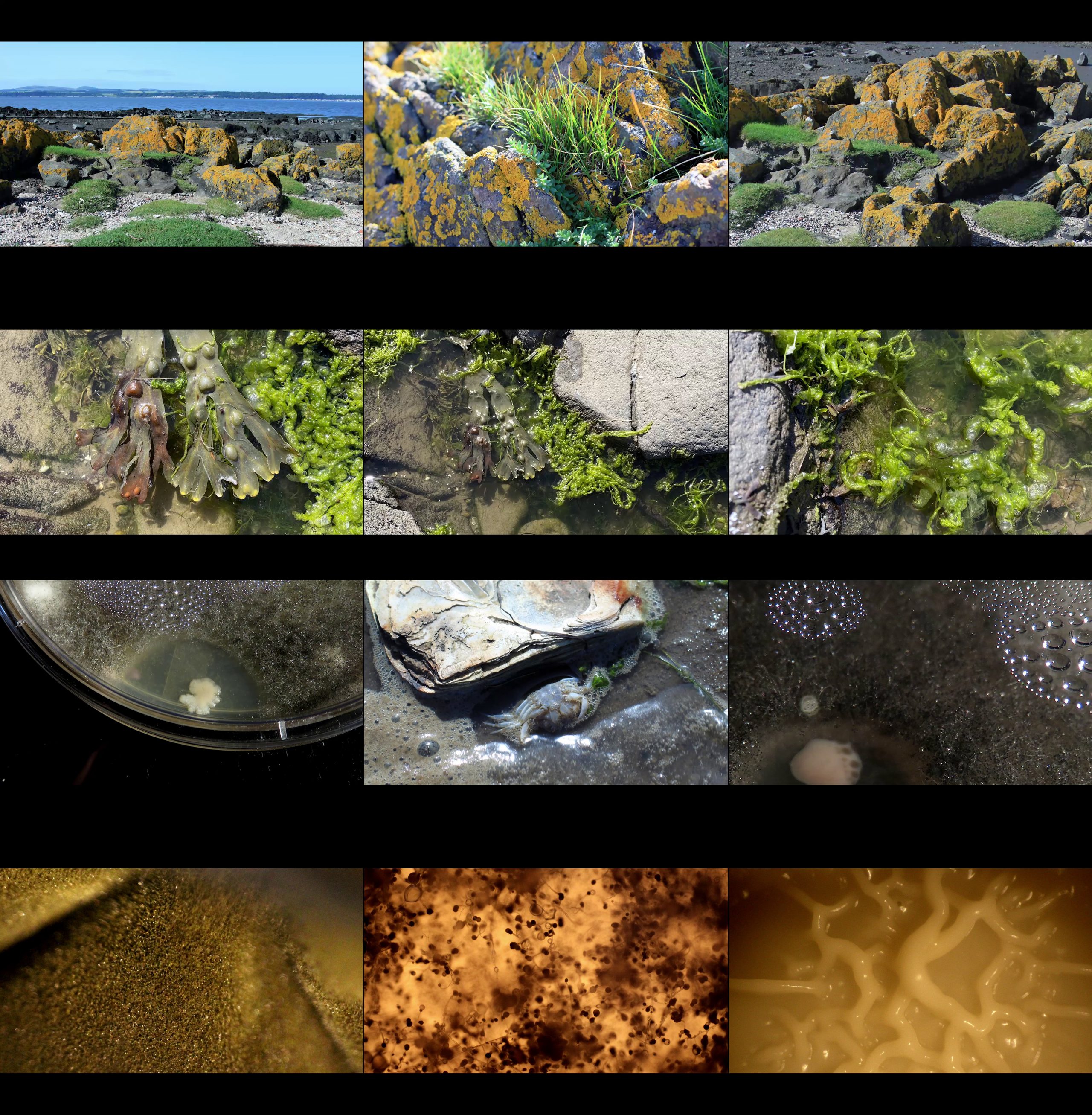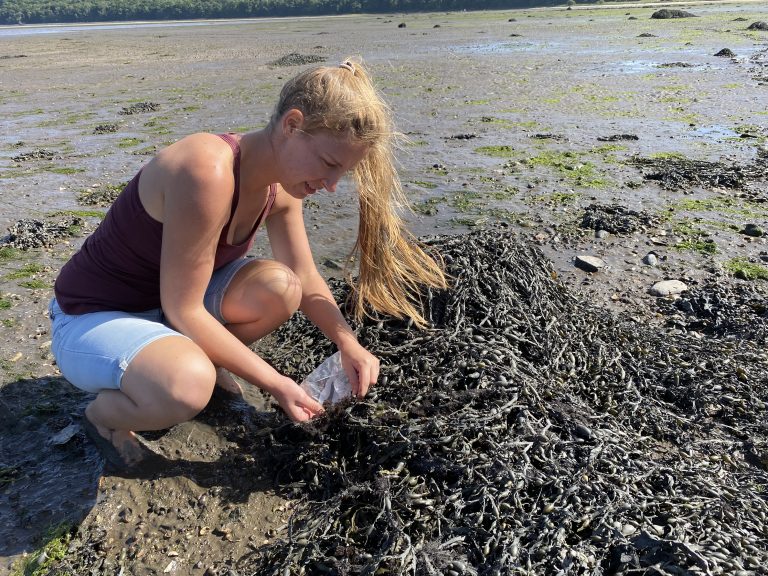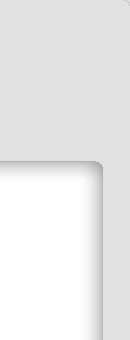“We want to build a system that puts care-based labor at the core of an entangled more-than-human biosphere”
How can we leverage the power of science, technology and the arts in a transdisciplinary and collaborative approach to help give coastal wetlands and their microbial worlds a warming, collective voice? The Rooted Sea: Halophytic Futures is a project by Sonia Mehra Chawla, Miriam Walsh (ASCUS Art & Science) in collaboration with Ray Interactive.

When and how did your project start?
The roots of this project were sown in India in 2016, with Sonia Mehra Chawla’s research on the threatened coastal and mangrove ecosystems of the country. Driving the Human has been an opportunity to expand the scope of the project by bringing brand new research on wetlands, halophytic plants, halophytic futures and potential worlds to the public through an exciting India-UK chapter. It’s been 50 years since an international treaty to protect and preserve wetlands was created but, around the world, wetlands are still declining three times faster than forests. These ecosystems across the world all face similar challenges, including erosion, encroachment, biodiversity loss, extensive destruction in the guise of infrastructure development, unplanned construction and illegal dumping of waste. Wetlands are also home to a diversity of wildlife as well as rural and indigenous communities with rich cultural heritage and a wealth of traditional knowledge systems.
Sonia has been collaborating with ASCUS Art & Science since 2018 on an art-science engagement project ‘Entanglements of Time & Tide’ with a focus on the North Sea/Atlantic Ocean. Her relationship and partnership with ASCUS has been evolving since this initial work, and in 2020, Sonia and ASCUS began conceptualising a new project for Driving the Human, bringing their collective energies together. Creative technology experts Ray Interactive joined the team as a new partner.
Through our project, we bring into focus the plants, organisms, creatures and technologies that inhabit the coasts and wetlands of India and Scotland, while exploring the intertwined ecologies of human and non-human lives through entanglements of nature, culture, politics, industry and economics. We are interested in the production, sharing and dissemination of knowledge between people, communities and countries.
Which stage is the project in?
For our Berlin presentation, we will present a new multi-channel film installation, ‘The Rooted Sea: Halophytic Futures’ by Sonia Mehra Chawla as a means to facilitate creative participation with the concepts of the work through an immersive experience, highlighting both ongoing work as well as brand new research, fieldwork and laboratory based experiments in India and Scotland, conducted especially for Driving the Human.
All of the research and development conducted since the selection for Driving the Human features as part of the various elements we are presenting in Berlin in October 2021; multi-channel film installation, the interactive portal and wider programme engagements.
Through our project we ask: How can we leverage the power of science, technology and the arts in a transdisciplinary and collaborative approach to help give coastal wetlands and their microbial worlds a warming, collective voice?
We want to build a system that puts care-based labor at the core of an entangled more-than-human biosphere. A system that is shaped by our deep connections to our lands, and our soils and waters. How can knowledge be produced, shared and disseminated between people, communities and countries? How can we think globally and act locally, going forward?
How can we connect conceptual changes in science with broader changes in worldview and values in society? How can art and science come together in ways that benefit the public? How can they teach us to inhabit our world in new, non-toxic ways?
In this phase of your research, what are the two most important aspects of the project?
The two most important aspects of the project right now are the research and development phase as well as our conversations with potential partners and building collaborations.
Research and development for the project, in India, has included ongoing research in with M S Swaminathan Research Foundation (MSSRF) on coastal wetlands and mangrove forests in India along with brand new research on halophytic plants, salinity and climate change, as well as the development of ‘The Rooted Sea’ in Scotland with ASCUS and Ray Interactive. In Scotland, this has included new laboratory based experiments with microbiology and microscopy at ASCUS Lab Edinburgh, from local fieldwork and creative visualizations of our concepts by Ray Interactive UK.
Conversations with potential partners towards building collaborations have spanned across India and the UK and further developed to include conversations with individuals and institutions in Germany and France. Reaching out beyond initial partners to explore how and with whom to expand the local and global reach of this work is an integral part of the project concept.
What are the next steps in the research?
Leading on from this initial work we plan to continue to expand the scope and reach of the project, forming key partnerships and collaborations between India, Scotland/UK, and developing new collaborations with Germany and France as a way to progress the project into its next phases of research and development (phase II), prototype development, production and programming.
Through these next steps we want to create and share physical, sensorial experiences for viewers, that are playful, deeply political, and resolutely attuned to more-than-human histories and their entanglements, that will engage with the themes of the project, that are also informed by scientific and technological research.
Alongside this we want to create an evolving knowledge laboratory and repository of collective and shared experiences by the design and creation of an interactive web based platform. This will draw on the potential of the digital to offer new ways of analysing the Anthropocene.
We will complement this with a programme of hands-on laboratory based and DIY activities and workshops that invite audiences to reimagine our futures, creating a platform for dialogue, engagement, collaboration and participation in science and art.












